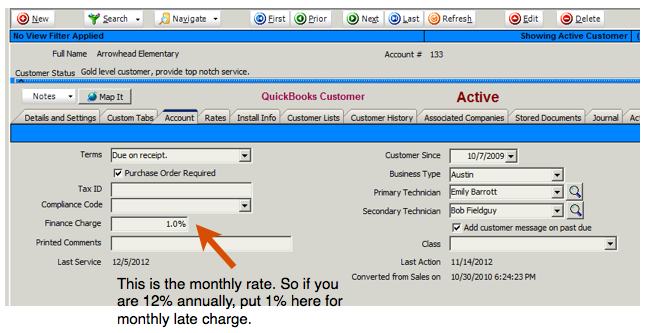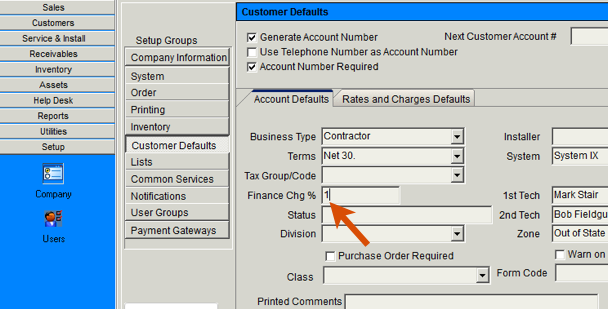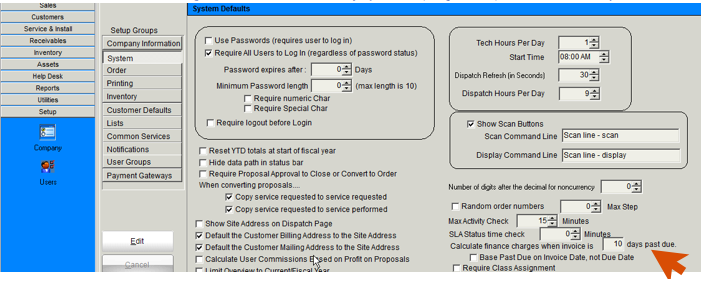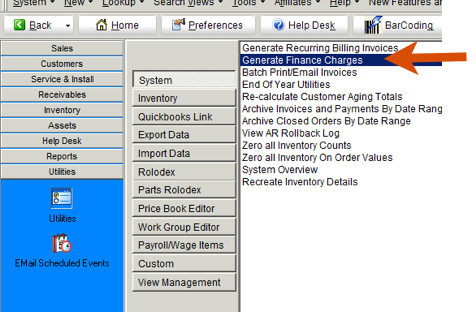Difference between revisions of "Late Fees / Finance Charges"
| Line 27: | Line 27: | ||
<br>[[File:LateFeesTotalsTAb.png]] | <br>[[File:LateFeesTotalsTAb.png]] | ||
| − | + | ||
| + | |||
| + | == Apply Late Fees to Individual Invoices == | ||
| + | You can also go to individual invoices and calculate late fees. | ||
<br>- Go to the invoice | <br>- Go to the invoice | ||
<br>- Click '''Actions''' > '''Calculate Finance Charge'''. | <br>- Click '''Actions''' > '''Calculate Finance Charge'''. | ||
Latest revision as of 22:45, 22 August 2013
If you are using late fees, each customer that would get charged a late fee should have the rate set in their customer record
You can also set a default so any new customer you create will have the finance charge field populated with the default rate
(Setup > Company > Customer Defaults > Finance Chg %. Enter monthly rate)
Setup how many days past due you want to start calculating finance charges:
- Go to Setup > Company > System
- Click Edit
- Locate the Calculate finance charges when invoice is ____ days past due (image below). Enter number of days.
- Click Save.
Then you can run a utility that will calculate the late fee for all of your open invoices
- Go to Utilities > Utilities > System
- Select Generate Finance Charges
- Click Run It
- SME will calculate the finance charges.
The late fee shows on the Totals tab on the invoice
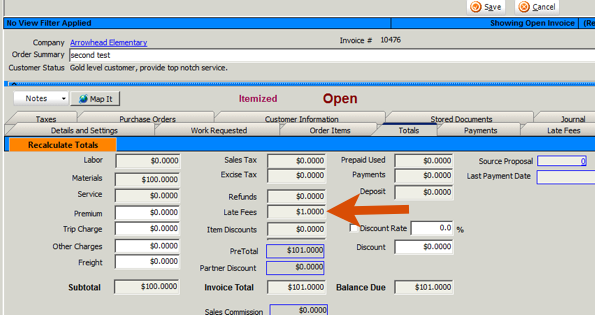
Apply Late Fees to Individual Invoices
You can also go to individual invoices and calculate late fees.
- Go to the invoice
- Click Actions > Calculate Finance Charge.
Sync Invoice with Late Fees to QuickBooks
If you check Export to QB on an invoice with a late fee on it, the invoice will go to QuickBooks and the late fee passes to QB through SMP_LateFees as shown in the image below.
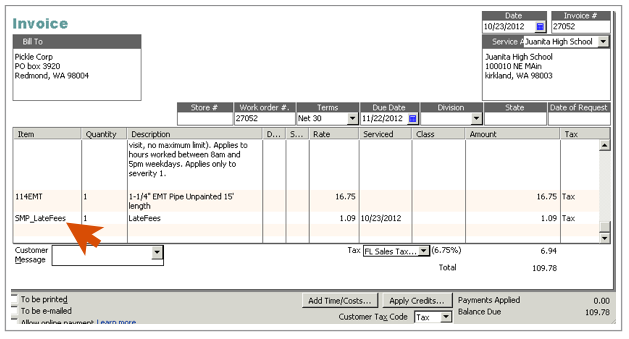
Make sure you have the income account and tax code set on the SMP_LateFees item in QuickBooks
- Open QuickBooks
- Click Lists > Item List
- Locate SMP_LateFees and open the item up
- Set the Income Account you want to use for late fees
- Set the Tax Code on the item
- Click OK

